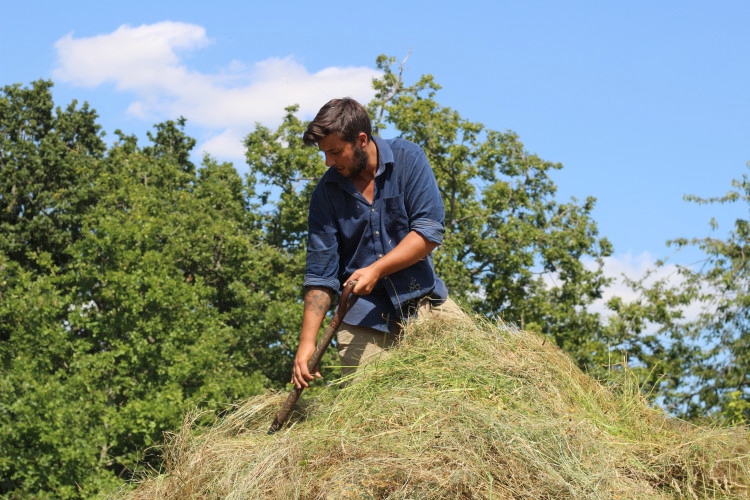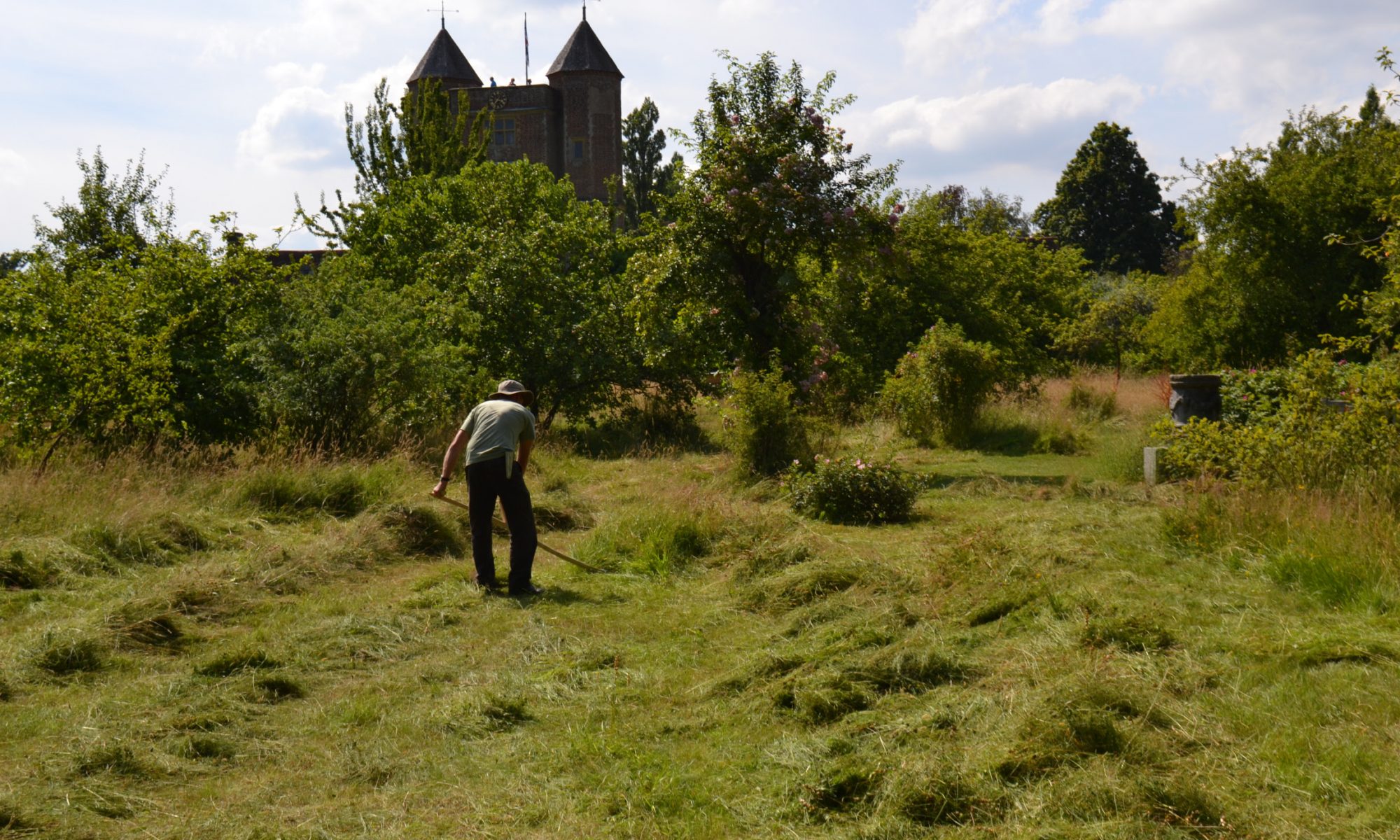Where, or even who, would we be without the beauty of an English meadow? The English meadow is entwined in our culture like honeysuckle coursing through a native hedge. They’ve been with us since Neolithic man discovered farming and have helped us forge a unique presence on this planet. Their romance and beauty have inspired countless writers, painters, poets and gardeners through the ages. And they still inspire us today. At Chelsea last year I couldn’t walk more than two steps without seeing dozens of our native jewels taking centre stage.
Meadows have always had an intimate relationship with gardens. Ancient Persians described meadows as a ‘recognisable confusion’ and a ‘colourful carpet mingled with colourful gems’. A perfect description – and it’s wonderful to see the resurgence of them in gardens. Here at Sissinghurst, in an effort to forge a stronger connection to our surrounding landscape, we have begun to create new meadows and enhance old ones. Our grasslands are becoming like one quilt, meadows are the patches and native hedging the stitching.
Hunting for new areas of lawn or grassland in an open, sunny position with low nutrients has become a habit. I enlist them in my struggle against homogeneous, uninspiring and manicured green spaces. Often the simple beginnings of a floral grassland are hidden amongst the grass. All I need do is stop cutting and allow it to grow from the end of February. To give these plants a fighting chance I sow yellow rattle. This hemi-parasitic annual partially feeds on the nutrients of neighbouring grasses, hindering their growth and giving wildflowers an opportunity to emerge.
Meadows thrive on low-nutrient soils, as high levels of fertility encourage grass and pernicious weeds to outcompete many wildflowers. Thuggish weeds like thistles and docks will always try to muscle their way in, so should be spot-treated with a selective herbicide.
I use a variety of methods, depending on the area, from scraping fertile top soil to planting wild flower plugs and re-seeding with orchid-laden hay. Now, as your respectful author I must admit to a deep, slightly obsessive infatuation that I have and I suspect many other meadow gardeners reading this have too. I am completely besotted by the seductive orchid. Alas, the gardener in me. I am Anthony and they Cleopatra.
So, imagine my excitement when Marden Meadow, a local ancient meadow managed by Kent Wildlife Trust offered us three acres of lush, orchid-laden hay for seed. Using seed from a neighbouring ancient meadow carries with it huge environmental benefits. The travel-miles are low and the seeds establish more easily when they are spread on to familiar ground. We put Kentish seeds back into a Kentish field. On a hot July day we loaded our metal trailer with hay. Marden felt dry and hazy and the atmosphere was one of passing; you could sense the meadow’s time was over. It was a bittersweet moment as we harvested its season’s labour. We quickly drove back to Sissinghurst and strew the hay on our bare, harrowed ground. Over the course of three weeks I flicked the hay high above my head to encourage the seeds to leave their home. Now I eagerly and obsessively wait to see if Sissinghurst will greet its first-ever green-winged orchid.
Ancient meadow or not, good management is key to success. Cutting in late summer will ensure that the flowers and grasses have set seed and, leaving the cuttings to lie for a few days, allows seeds and wildlife to escape. Afterwards, rake and remove the grass. As gardeners, we are free to create our own interpretation of nature, so don’t be afraid to experiment with non-natives such as Irises and Crocosmia. In our orchard you’ll find roses cascading out of long grass like floral geysers.
Once established and managed correctly the flowers become like friends, as the years go by you will gain more and more. A meadow isn’t a single, static feature like a garden perennial. A meadow evolves, it moves. New inhabitants will appear with each new season from the simple daisy to the regal orchid. Yellow rattle will wash around the grassland each year like well-spread butter on dry toast.
Hot summer evenings are when you feel the life force of a meadow; it is a living, breathing entity. Bees collect the last of the day’s nectar to turn into golden honey. Crickets and beetles play into the evening like a well-rehearsed orchestra joined by the rustling of grasses in a gentle breeze. And butterflies will dance from flower to flower on a colourful canopy rising like ships on a turbulent sea.
I could watch the meadows of Sissinghurst for hours, gazing upon the community that I care for. Visit our meadows and witness this oasis in all its beauty for yourself this summer.
TEST
Cutting in late summer will ensure that the flowers and grasses have set seed and, leaving the cuttings to lie for a few days, allows seeds and wildlife to escape
- words: Joshua Sparks
You may also like
Go with the Flow
Sue Whigham shares some valuable new-to-gardening advice I’m sure that by now we should be used to the rain but I’m not entirely sure that we are. We had a dry, sunny day the other day and how everybody’s mood...
Farm Fables
Jane Howard gets to the bottom of why so many ponds have disappeared across the High Weald I have a new passion, almost an obsession, it’s about ponds. And there’s a distinct possibility I might become a bit of a...
Hedge Issues
Sue Whigham takes a meander along nature’s verdant and vital corridors Recently the BBC’s Today programme carried a feature about England’s hedgerows which created a lot of interest among listeners. On the strength of that, Martha Kearney interviewed one of...















